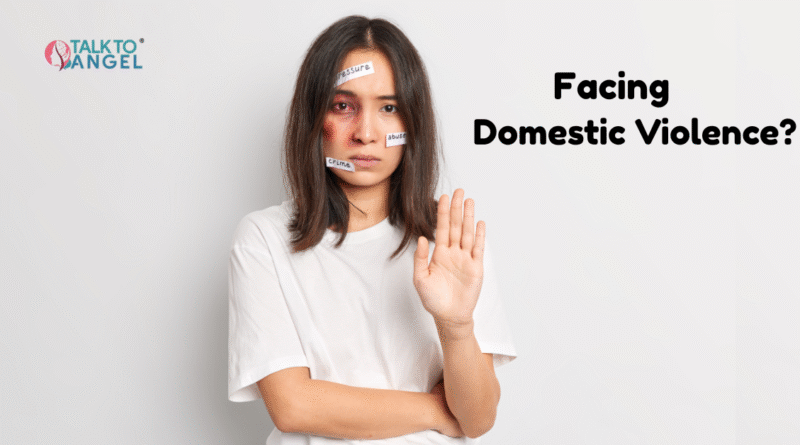Domestic Violence Awareness and Recovery Guide
Regardless of age, gender, socioeconomic status, or cultural background, domestic violence is a widespread and extremely harmful problem that impacts people. It involves a pattern of behavior where one partner abuses the other physically, emotionally, psychologically, sexually, or financially to obtain or keep control over them. The consequences are profound, impacting not only the immediate victims but also their families, communities, and society at large.
Understanding Domestic Violence
Any behavior in an intimate relationship that harms the other person physically, psychologically, or sexually is considered domestic violence, also known as intimate partner violence (IPV). Abuse is not limited to physical violence; it often includes coercion, manipulation, threats, and humiliation.
While both men and women can be victims, women are disproportionately affected, particularly in patriarchal societies where gender inequality perpetuates abuse World Health Organization. Children who grow up in abusive households are also profoundly affected, either as direct victims of violence or as witnesses to it.
Recognizing the Signs of Domestic Violence
Recognizing the warning signs of domestic violence can be lifesaving. Common signs include:
- Physical abuse: Unexplained injuries, bruises, burns, or fractures.
- Emotional abuse: Verbal insults, humiliation, unrelenting criticism, gaslighting, or seclusion are examples of emotional abuse.
- Psychological manipulation: Intimidation, control over daily activities, monitoring communications.
- Sexual abuse: Non-consensual acts, coercion into sexual activities, or reproductive coercion.
- Financial control: Restricting access to finances, employment sabotage, or forced financial dependence.
- Social isolation: Cutting off friends and family, creating dependency on the abuser.
Abusers often shift between affectionate and abusive behaviors, creating confusion and emotional dependency in their victims.
Psychological and Social Impact
The consequences of domestic violence are long-lasting and multifaceted:
- Mental Health Issues: Victims often suffer from depression, anxiety, PTSD, and low self-esteem.
- Physical Health: Chronic pain, injury, and long-term health complications.
- Economic Hardship: Loss of employment, housing instability, and financial dependence.
- Social Isolation: Reduced support networks due to shame or fear of stigma.
- Intergenerational Trauma: Children exposed to violence are at higher risk of future abuse, either as victims or perpetrators.
Rebuilding Lives After Abuse
It takes time, patience, and support to recover from domestic abuse:
- Safety Planning: Developing a strategy to safely leave the abusive environment.
- Emotional Healing: Processing trauma through therapy, journaling, and self-compassion.
- Reclaiming Autonomy: Getting back in control of one’s finances, education, and decision-making abilities.
- Building Support Networks: Connecting with trusted family members, friends, and support groups.
- Legal Protection: Accessing restraining orders, custody arrangements, and other legal rights.
Professional Support and Resources
Seeking professional help is vital for survivors. Support can come in many forms:
- Counseling and Therapy: Individual and group therapy to address trauma and rebuild self-worth.
- Legal Aid: Support for restraining orders, custody, and case filing.
- Shelters and Safe Homes: Providing immediate safety, especially for women and children.
- Helplines and Crisis Intervention: Confidential and immediate access to assistance and guidance.
Expert Insights: Dr. R. K. Suri at Psychowellness Center
Dr. R. K. Suri, a leading clinical psychologist at Psychowellness Center, provides specialized services for individuals impacted by domestic violence. His therapeutic approach includes:
- Trauma-Informed Care: Creating a safe, empathetic space where survivors feel validated.
- Cognitive Behavioral Therapy (CBT): Addressing harmful thought patterns and rebuilding self-efficacy.
- Family Therapy: Assisting families in navigating the aftermath of abuse and improving communication.
- Crisis Intervention: Immediate psychological support during emergencies.
- Empowerment-Based Counseling: Helping survivors reclaim autonomy and build resilience.
The Psychowellness Center, recognized as the best mental health clinic in Delhi, fosters a non-judgmental environment where survivors can begin their journey to recovery.
TalktoAngel: Accessible Online Support for Survivors
TalktoAngel provides inclusive, private, and expert-led online counselling for individuals affected by domestic violence. The platform offers:
- Certified Therapists: Specializing in trauma recovery, self-esteem, and empowerment.
- Flexible Scheduling: Convenient online sessions tailored to individual needs.
- Anonymity and Confidentiality: Safe communication without fear of exposure.
- Therapeutic Tools: Safety planning guides, affirmation exercises, and trauma worksheets.
- Inclusive Support: Assistance for people of all genders, ages, and backgrounds.
TalktoAngel empowers survivors to rebuild their lives with dignity, strength, and professional guidance.
Conclusion
Domestic violence is not just a private matter—it is a public health crisis that requires compassion, awareness, and decisive action. Recognizing the signs and encouraging survivors to seek help can be life-saving. Healing is possible when survivors are equipped with the right tools, supportive environments, and access to professional care.
With resources like Psychowellness Center and TalktoAngel, recognised as the best mental health wellness clinic in Delhi, individuals no longer have to walk the path to recovery alone. Let us build a world where safety, respect, and dignity are not privileges—but rights for everyone.
References
Black, M. C., Basile, K. C., Breiding, M. J., Smith, S. G., Walters, M. L., Merrick, M. T., … & Stevens, M. R. (2011). The National Intimate Partner and Sexual Violence Survey (NISVS): 2010 Summary Report. Centers for Disease Control and Prevention.
World Health Organization. (2021). Violence against women prevalence estimates, 2018. https://www.who.int/publications/i/item/9789240022256


